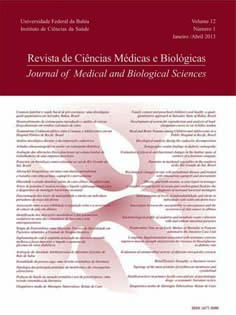Sonographic ocular findings in diabetic retinopathy
DOI:
https://doi.org/10.9771/cmbio.v12i1.6511Palavras-chave:
Diabetic Retinopathy. Diagnosis. Ultrasonography.Resumo
Introduction: Despite recent improvements in ophthalmologic examination techniques, the evaluation of vitreoretinal diseases due diabetic retinopathy (DR) often presents a diagnostic challenge. Ocular sonography is superior to computed tomography and magnetic resonance imaging in detecting of DR, because the eye can be examined dynamically during ocular movements, and can gather a vast amount of information what is not possible with clinical examination alone. Objective: Observational study demonstrating ophthalmic ultrasound findings of patients with DR in your different grades. Methodology: Study in which are presented the sonographic aspects in a group of patients with DR in your different grades. We studied both eyes of individuals with DR by ocular sonography. The diagnostic of DR was based on the clinical and retinography examinations performed. The DR was classified according to the modified Airlie House system on the basis of stereoscopic fundus examination with a 90 diopter lens. Results: The individuals examined had some degree of DR, level 20 to 85 of the Early Treatment of Diabetic Retinopathy Scale. The diagnosis of DR was accomplished when at least four or more microaneurysms were present in the retinography, with or without hard or soft exudates, in the absence of other known diseases, being presented the sonographic features of these complications. Conclusion: Ocular sonography is very useful diagnostic tool in detection and evaluation of DR complications, because shows the nature and extent of lesions in eyes with vitreous opacification, which is usually not visualized on ophthalmoscopy, helping to determine the clinical treatment or timing of surgery, and to predict the visual outcome and it may serve as a useful extension of the initial investigation of the symptomatic or not patient.
Downloads
Downloads
Publicado
Como Citar
Edição
Seção
Licença
A Revista de Ciências Médicas e Biológicas reserva-se todos os direitos autorais dos trabalhos publicados, inclusive de tradução, permitindo, entretanto, a sua posterior reprodução como transcrição, com a devida citação de fonte. O periódico tem acesso livre e gratuito.






